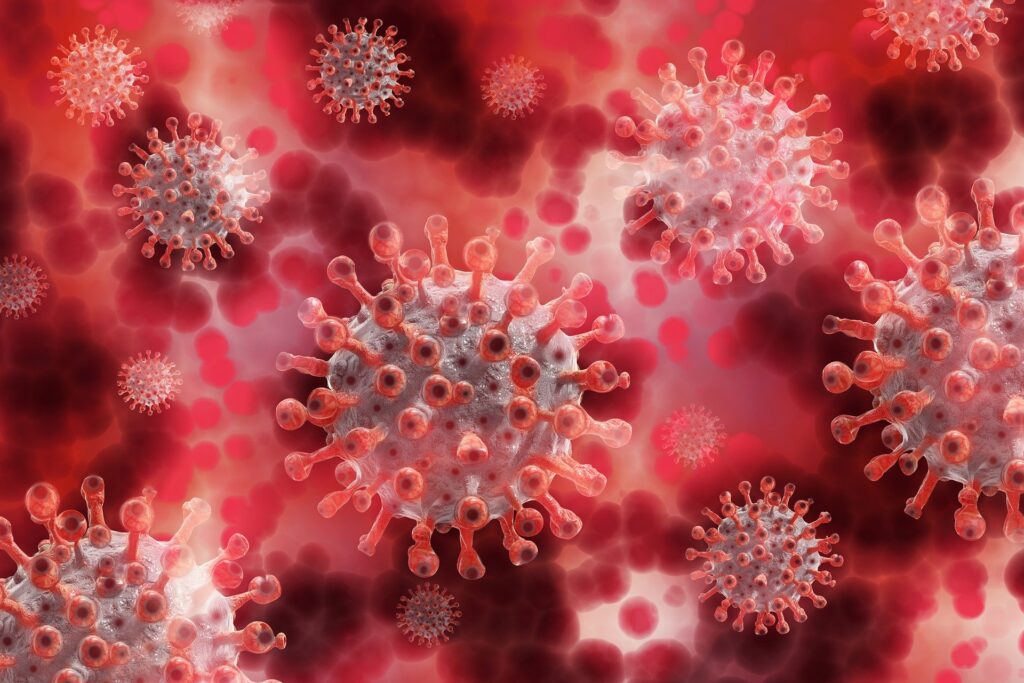Metformin May Be A Promising Candidate Against SARS-CoV-2

By Rahul Saha, PhD. July 27, 2020
Very few people are aware of the fact that Metformin was first introduced as an anti influenza medicine. It’s one of the side effects was inhibition of Gluconeogenesis and thus lowered blood glucose level.
Metformin has catapulted itself widely as an anti-diabetic drug. It is capable of meliorating hyperglycemia without causing stimulation of beta cells (in the Islet of Langerhans) in pancreas to secrete insulin or promote weight gain. The anti-diabetic effects of Metformin can be credited to two biochemical modulations
(i) reduction in hepatic glucose synthesis via inhibition of gluconeogenesis pathway
(ii) enhancement of glucose uptake via skeletal myocytes.
AMP activated protein kinase/AMPK is the prime candidate of this versatile drug. Metformin exerts its therapeutic metabolic effects by modulating the signaling cascade perpetuated by AMPK. AMPK exists as a heterotrimer comprising of one catalytic and two regulatory subunits and usually plays roles in coordinating metabolism and growth. AMP or ADP has been found to bind directly to the regulatory subunit of AMPK during lowered concentrations of intracellular ATP, which causes conformational change in AMPK. This triggers phosphorylation of AMPK and also prohibits its dephosphorylation. The phosphorylation of AMPK takes place at the
Threonine 172 residue in its activation loop. There are many kinases that can phosphorylate AMPK like CAMKK2, LKB1, TAK1 (which is a member of mitogen activated protein kinase kinase kinase/MAPKKK superfamily).
Metformin pharmacodynamically, activates AMP dependent protein kinase (AMPK) via its phosphorylation in the hepatocytes. Metformin causes phosphorylation of AMPK in an LBK1 dependent manner. It acts as a mild antagonist of the Complex I of the electron transport chain, which eventually leads to a dip in the intracellular ATP levels. This in turn, can increase intracellular AMP and ADP levels. Many studies have hypothesized and also shown that SARSCoV-2 induced COVID-19 causes ARDS via angiotensin converting enzyme 2/ACE2 mediated activation of AMPK/mTOR (mammalian target of rapamycin) signaling pathway after the binding of SARS-CoV-2 Spike protein (S1 subunit containing RBD) to the protease domain of the type I membrane protein, carboxymetalloprotease and primary receptor for SARS-CoV-2 Spike protein, ACE2. On the other hand, activated AMPK, phosphorylates ACE2 at Ser 680 residue, which in turn activates ACE2.
mTOR is the most pivotal intracellular nutrient sensor, which is a serine-threonine kinase. Its role is to regulate cell cycle and growth by “sensing” the extracellular energy state controlled by amino acids, glucose, growth factors, and hormones availability. It has been shown that a high
level of ATP is able to activate mTOR signaling and a lower level of ATP along with absence of growth factors plummet the mTOR signaling cascade. mTOR inhibition can prohibit hyperactivation of the immune system initiated by activating the STAT3 pathway which, in turn, increases the expression of receptors for the proinflammatory cytokines like IL-6 and also induces IL-6 expression.
It’s also a known fact that Metformin phosphorylates and activates AMPK, which in turn can phosphorylate and activate ACE2. Phosphorylation of ACE2 keeps it stable and prevents its level from dipping which has been observed in COVID-19 patients. This causes disruption in the RAAS system and can also lead to thrombosis via Kallikrein system dysfunction.
The mammalian target of rapamycin (mTOR) signaling has been found to act as a key player in the pathogenesis of COVID-19. AMPK is phosphorylated and activated by the liver kinase B1/LBK1 perpetuated by Metformin, which in turn inhibits the mTOR pathway. mTOR signaling is also attenuated indirectly via suppression of AKT activation by phosphorylation of insulin receptor substrate 1 (IRS1) through activated AMPK.
The main reason behind the demise of patients is the hyperactivity of the immune system via induction of cytokine release syndrome (CRS), also known as cytokine storm. The proinflammatory cytokine receptor antagonists like Tocilizumab, which is a humanized, recombinant monoclonal antibody that antagonizes or blocks IL-6 receptor, has produced promising results when it comes to accelerating recovery of severely ill COVID-19 patients. In this regard, Metformin can prove to be a promising drug as it can inhibit one of the signaling cascades perpetuated by mTOR which leads to hyperactivity of the immune system.
mTOR inhibition which is indirectly achieved via Metformin can inhibit the growth of conventional T lymphocytes. mTOR inhibition also leads to maintenance of T regulatory (Treg) cell growth and activity. Treg cells have been found to downregulate the hyperactivity of the immune system. Treg expansion along with the inhibition of conventional T cell proliferation
can attenuate the much-dreaded pathophysiology of cytokine storm observed in case of critical COVID-19 patients.

A word of caution while using Metformin to attenuate symptoms of COVID-19 is that Metformin has been found to adversely affect vitamin B12 (cobalamin) absorption in the small intestine by up to 30%. This in turn, reduces serum vitamin B12 level by 5%-10%. Vitamin B12 has been found to be extremely vital for maintaining optimal immune response. Thus, a cautious approach is mandatory while taking Metformin as lowered vitamin B12 level can weaken the immune response against SARS-CoV-2, which can cause more harm than good. Hence, individuals on Metformin are advised to take supplemental dose of the active form of vitamin B12 methyl cobalamin in order to negate this specific side effect.
Another rare yet potential side effect is the accumulation of lactic acid, also known as lactic acidosis as it can increase the risk of fatality in COVID-19 patients. The comorbidities which predispose an individual towards lactic acidosis due to Metformin usage are acute heart failure, acute pulmonary decompensation, renal impairment and sepsis.
Thus, the administration of Metformin to COVID-19 patients seems to be a plausible and promising approach. The patients receiving Metformin as a therapeutic agent must undergo constant serum vitamin B12 level monitoring. The patients suffering from the previously mentioned comorbidities which enhance their susceptibility towards developing lactic acidosis must refrain from taking Metformin for alleviation of COVID-19 symptoms. Further research and clinical trials are required to warrant the hypothesis regarding the promising effects of Metformin in the treatment of COVID-19 patients.
REFERENCES
- Maria M Mihaylova, Reuben J Shaw. The AMPK signalling pathway coordinates cell
growth, autophagy and metabolism. Nat Cell Biol. 2011 Sep 2;13(9):1016-23. - Swati Sharma, Avik Ray, Balakrishnan Sadasivam. Metformin in COVID-19: A possible
role beyond diabetes. Diabetes Res Clin Pract. 2020 Jun; 164: 108183. - G Zhou, R Myers, Y Li, Y Chen, X Shen, J Fenyk-Melody, M Wu et al. Role of AMPactivated protein kinase in mechanism of metformin action. J Clin Invest. 2001
Oct;108(8):1167-74. - Graham Rena, D Grahame Hardie, Ewan R Pearson. The mechanisms of action of
metformin. Diabetologia. 2017 Sep;60(9):1577-1585. - Chia Siang Kow, Syed Shahzad Hasan. Metformin use amid coronavirus disease 2019
pandemic. J Med Virol. 2020 May 29;10.1002/jmv.26090.
Let’s meet the author: Rahul Saha, MSc.,PhD.








